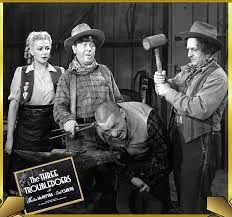Conquer Your Fears and Embrace the Thrill
Stairway to Heaven in the Dachstein Mountains. This isn't your average scenic overlook; it's a suspended bridge that demands courage and rewards visitors with breathtaking panoramic views and an unmatched sense of accomplishment. So, ready to dive in or should I say climb to the heavens of an awesome adventure?
Forget the mundane; the Stairway to Heaven is an invitation to embrace the extraordinary. It's a chance to challenge yourself, to confront your fears, and to witness the majestic beauty of the Austrian Alps from a perspective unlike any other.
A Bridge to the Sky:
Located on the Dachstein Glacier, the Stairway to Heaven is part of a complex of attractions that includes the Dachstein Ice Palace, the Sky Walk viewing platform, and the Dachstein Suspension Bridge. While each of these offers a unique perspective, the Stairway to Heaven stands out as the most thrilling.
This remarkable structure is not for the faint of heart. It's a narrow staircase suspended high above the glacier, offering a dizzying yet exhilarating descent (or ascent, depending on your perspective). The grated metal steps allow for a clear view of the vast expanse below, amplifying the feeling of being suspended in mid-air.
Why Take the Plunge? The Allure of Adventure:
The Stairway to Heaven isn't just about the stunning visuals; it's about the personal experience. It’s about the adrenaline rush, the surge of accomplishment, and the profound connection to nature that comes from conquering a perceived challenge.
Here's why you should consider adding this thrilling adventure to your bucket list: Unparalleled Views: The Dachstein Mountains are renowned for their stunning beauty, and the Stairway to Heaven provides an unparalleled vantage point. Witness the sprawling glaciers, jagged peaks, and verdant valleys stretching as far as the eye can see. It's a visual feast that will leave you speechless.
Conquer Your Fears: Fear of heights is a common human experience. This staircase offers a safe, controlled environment to confront that fear head-on. Each step taken is a small victory, building confidence and proving that you are capable of overcoming perceived limitations.
A Sense of Accomplishment: Reaching the bottom (or the top!) of the Stairway to Heaven is a significant achievement. It's a testament to your courage and determination. This sense of accomplishment can be incredibly empowering, spilling over into other aspects of your life.
A Unique Photo Opportunity: Capture the moment with stunning photos and videos. The dramatic backdrop of the Alps combined with the unique perspective from the staircase will result in memorable visuals that you'll cherish for years to come.
Part of a Larger Experience: The Stairway to Heaven is just one component of the Dachstein Glacier experience. Explore the Ice Palace, walk across the suspension bridge, and soak in the views from the Sky Walk. Make a day of it and immerse yourself in the wonder of the Austrian Alps.
Preparing for Your Ascent (or Descent):
Before embarking on this thrilling adventure, keep these tips in mind:Check the Weather: Mountain weather can be unpredictable. Check the forecast before you go and dress appropriately in layers.
Wear Sturdy Shoes: Comfortable, supportive shoes are essential for navigating the staircase and exploring the other attractions.
Take Your Time: There's no need to rush. Take your time, breathe deeply, and savor the experience.
Hold On: The handrails are there for a reason! Use them for added stability, especially if
you're feeling apprehensive.
Bring Your Camera: Capture the stunning views and your personal triumph.
Embrace the Moment: Let go of your fears and fully immerse yourself in the adventure.
More Than Just a Tourist Attraction:
The Stairway to Heaven is more than just a tourist attraction; it's an opportunity for personal growth and transformation. It's a chance to push your boundaries, conquer your fears, and witness the raw beauty of the natural world.
So, are you ready to take the plunge? Are you ready to embrace the thrill and embark on the adventure of a lifetime? The Stairway to Heaven in Austria awaits. It promises an unforgettable experience that will leave you feeling exhilarated, empowered, and deeply connected to the mountains. Take a deep breath, trust yourself, and climb towards the sky. The adventure is calling!



















